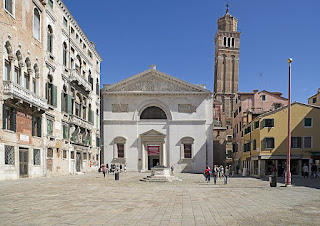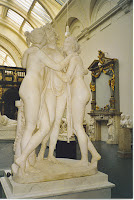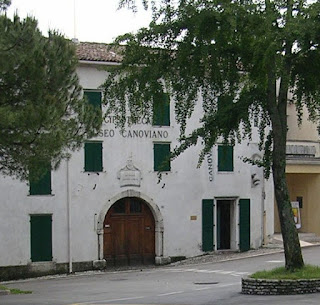Old master of Venice who set new standards
 |
| Titian, a self-portrait painted in about 1567, which can be found in the Prado in Madrid |
Titian is regarded as the greatest painter of 16th century Venice, a giant of the Renaissance held in awe by his contemporaries and seen today as having had a profound influence on the development of painting in Italy and Europe.
The artists of Renaissance Italy clearly owe much to the new standards set by Titian in the use of colour and his penetration of human character. Beyond Italy, the work of Rubens, Rembrandt and Manet have echoes of Titian.
Titian was enormously versatile, famous for landscapes, portraits, erotic nudes and monumental religious works. Although it was his fullness of form, the depth of colour and his ability to bring his figures almost to life which he earned his reputation, he was not afraid to experiment with his painting. Towards the end of his life, some of his works were impressionist in nature, almost abstract.
Born in Piave di Cadore, a village at the foot of the Dolomites, he was one of four sons of a military official, Gregorio di Conte dei Vecelli. He and his older brother, Francesco, also a painter, moved to Venice when Tiziano was nine or 10 years old, to live with an uncle.
By the age of 12, Tiziano was working for Giovanni Bellini, the best known of the Bellini family of Renaissance painters in Venice, whose workshop was one of the most important in the city. In around 1508 he began working with Giorgione of Castelfranco, collaborating on frescoes at the Fondaco dei Tedeschi, the headquarters of Venice's German merchants, situated on the Grand Canal near the Rialto bridge.
 |
| Titian's Pesaro Madonna in the Frari church in Venice |
Titian launched his independent career after Giorgione died in 1510. His popularity grew rapidly and among those who commissioned him were Alfonse I of Este, Duke of Ferrara, the Duke of Urbino, the Court of Pope Paolo III Farnese, the Holy Roman Emperor Charles V and Charles's son, Philip II of Spain.
He travelled within Italy and to other parts of Europe, including Austria, but after 1551 rarely left Venice, except for summer visits to Pieve di Cadore. He was married in 1525 and is thought to have had three or four children, one of whom, Orazio, became his assistant but also died in the plague. His wife, Cecilia, passed away after they had been together for only five years, and he never married again.
Titian courted controversy with the obvious eroticism of his nudes and through his friendship with the writer Pietro Aretino, a journalist whose work scandalised 16th century Italian society. Aretino arrived in Venice at around the same time as the sculptor Jacopo Sansovino, and the three are said to have become inseparable.
Around 300 of an estimated 400 of Titian's works are said to have survived. Some are in churches in Venice and elsewhere in Italy, such as the Basilica di Santa Maria Gloriosa dei Frari in the San Polo quarter of Venice, where visitors can see the vivid colours of the Pesaro Madonna and the monumental Assumption of the Virgin, set behind the high altar. There are also a number of Titians in the Church of Santa Maria della Salute on the Punta Dogana, between the Grand Canal and the Giudecca Canal.
 |
| Venus of Urbino, a work by Titian painted in 1538, which is on display at the Uffizi in Florence |
When they do change hands it is for considerable sums. For example, when Diana and Actaeon, one work in a seven-part series of mythological paintings for Philip II of Spain, became available, it was bought by the National Gallery and the National Galleries of Scotland in conjunction for £50 million.
Titian was buried at the Basilica of Santa Maria Gloriosa dei Frari. At first his resting place, near to the Pesaro Madonna, was unmarked, but later the Austrian rulers of Venice commissioned Antonio Canova to sculpt a large monument. Canova's own heart was buried within the monument after his death at the age of 64.
 |
| Titian's Assumption of the Virgin dominates the high altar inside the Basilica di Santa Maria Gloriosa dei Frari |
The Basilica di Santa Maria Gloriosa dei Frari, often referred to simply as the Frari, is one of Venice's greatest churches, situated in Campo dei Frari at the heart of the San Polo district. Built of brick, it is one of three notable churches in Venice built in the Italian Gothic style. Construction began in the 14th century and took more than 100 years to complete, including a campanile that is the second tallest in Venice, after St Mark's. In addition to Titian, the brilliant composer Claudio Monteverdi was also buried in the Frari.
Travel tip:
The Church of Santa Maria della Salute is one of the most familiar sights of Venice, one captured by many artists, including Turner and Canaletto. Its position on the narrow promontory between the Grand Canal and the Giudecca Canal enables it to stand almost like a sentry, guarding the entrance to the Bacino di San Marco and the lagoon beyond. It houses a number of works by Titian. Ironically, given how the artist died, it was built by the Republic of Venice as an offer for the city's deliverance from the devastating outbreak of plague that occurred in 1630, dedicated to Our Lady of Health (in Italian: Salute).
Read more:
Lisa del Giocondo - Florentine mother immortalised as the Mona Lisa
How the works of Tintoretto still adorn Venice
Books
Titian: Circa 1490-1576, by Ian G Kennedy
Titian: His Life and the Golden Age of Venice, by Sheila Hale
(Photo inside the Basilica di Santa Maria Gloriosa dei Frari by Welleschik CC BY-SA 3.0)
Home




